A question I get asked a lot is “when is the best time to visit Japan”, it requires an answer with a good bit of context!
Japan’s seasons aren’t just about what weather you will have during your trip, they affect everything; from what you’ll pay for a hotel to what’s blooming, the kind of photos you can take, what’s closed, and how packed the trains are.
If you’re travelling for the first time, choosing when to go can feel overwhelming, with so many options and information. But that’s where I come in, I share my opinions and experience and do the work so you don’t have to!
My guide breaks it down simply, both by month and season: weather, crowds, activities, and regional highlights. So you can pick what fits your trip, your personal preferences, your budget and your timing – making sure you enjoy your first time in Japan!
Plus I call out some top tips and highlights, no matter when in the year you can visit this wonderful country.
What to consider before you pick a month
Before we continue, have a think and ask yourself:
- What do I want to see or do? (Cherry blossoms? Autumn leaves? Skiing? Festivals?)
- What kind of weather suits me? (Hot and humid? Crisp and cool?) – Jump to my table summarising the average weather by month
- Am I on a tight budget? (Prices rise fast in peak months)
- Do I want to avoid crowds? (Certain weeks get packed)
- Where in Japan am I going? (Hokkaido vs. Okinawa = very different climates)
Can’t answer this yet? not a problem, that was exactly how I felt before my first trip.
Scroll to my month-by-month guide for a quick snapshot to get your creative juices flowing.
Disclaimer: This article features affiliate links. If you click these links, and choose to book with that hotel or company, I will earn a small commission at no extra cost to you. I appreciate the support that allows me to continue providing this information
TOP TIP! Make sure you are fully prepared with my “First time visitor to Japan starter kit”
BREAK DOWN THE LANGUAGE BARRIER: The key phrases to learn and technology to use to make your first trip to Japan easy
HOW TO STAY CONNECTED ON THE GO: The cheapest data and easiest way to make sure you can access everything you need
HOW TO AVOID CURRENCY FEES LIKE A PRO: The best cards for travel and withdrawing cash
22 SMARTPHONE APPS TO MAKE YOUR TRIP EASIER: The ultimate FREE apps to download before you go
SAVE 30-90 MINUTES AT CUSTOMS AND IMMIGRATION : The simple and FREE QR code to speed you through the airport
ETIQUETTE DO’S AND DON’TS FOR TOURISTS : What you need to be aware of on your first time in Japan
TL;DR: Quick answers to help you decide
Really haven’t got time? Here’s 30 second summary of the best time to visit Japan. Read on below for more details and specific helpful tips for your first trip.
- Best overall months: April/May (for cherry blossoms) and October/November (for autumn colours)
- Least crowded: January to early March (cold but quiet)
- Best for budget: June and January
- Best for festivals: July and August
- Avoid if possible: Golden Week (late April–early May), Obon (mid-August), and New Year (29 Dec–3 Jan)
My personal favourite times to visit Japan are May and October, based on the weather I like most and smaller crowds. Despite this Japan really is an all year round destination, especially when you consider the different regions.

Japan by season: pros and cons
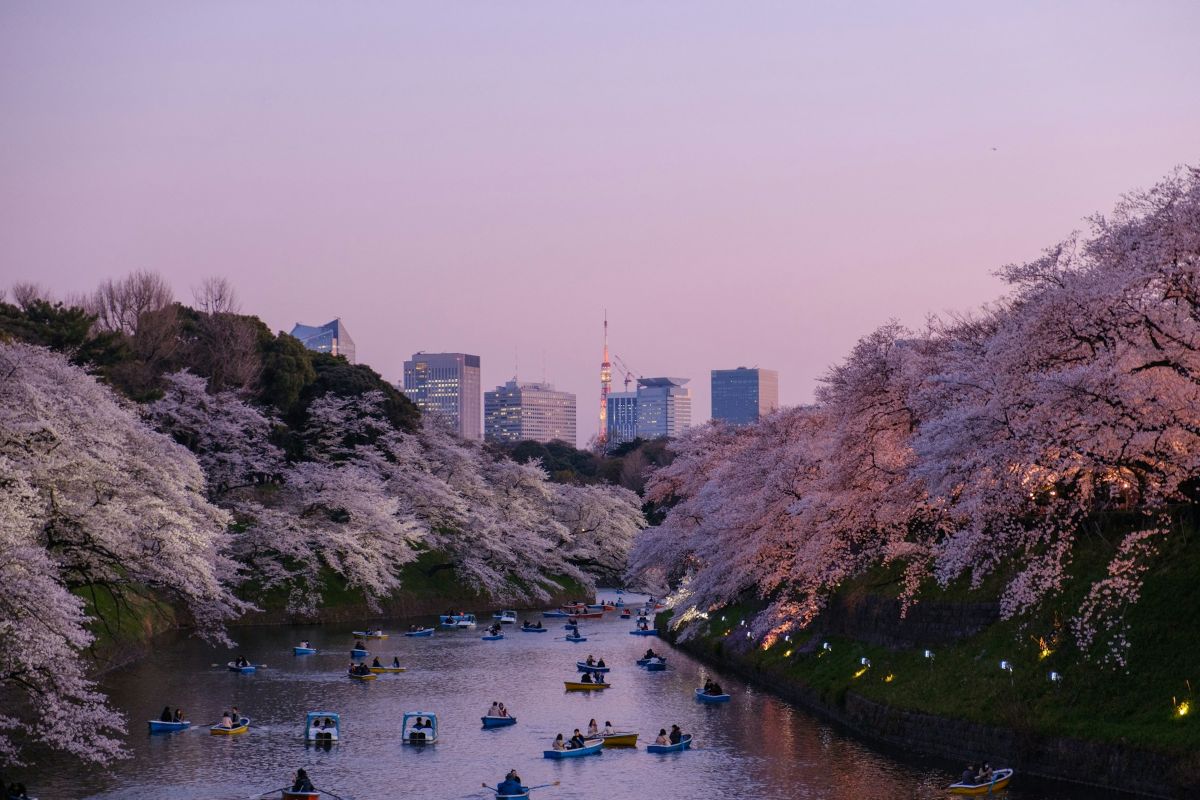
Spring (March–May)
What to expect:
This is the most famous time to visit, and it shows. The cherry blossoms (sakura) are stunning and the weather is mild, especially in April. My first trip to Japan was end of April into May and we had a great time, despite part of that time being Golden Week, more on that later.
Highlights:
- Cherry blossom season (late March to early April in most cities)
- Comfortable sightseeing weather
- Spring food and hanami (blossom-viewing) culture
Downsides:
- Crowded (especially in Kyoto and Tokyo)
- Expensive flights and hotels
- Golden Week (end of April to early May)
Where to go:
Tokyo, Kyoto, Osaka, Hiroshima, Kanazawa, Yoshino (Nara), Mount Fuji region
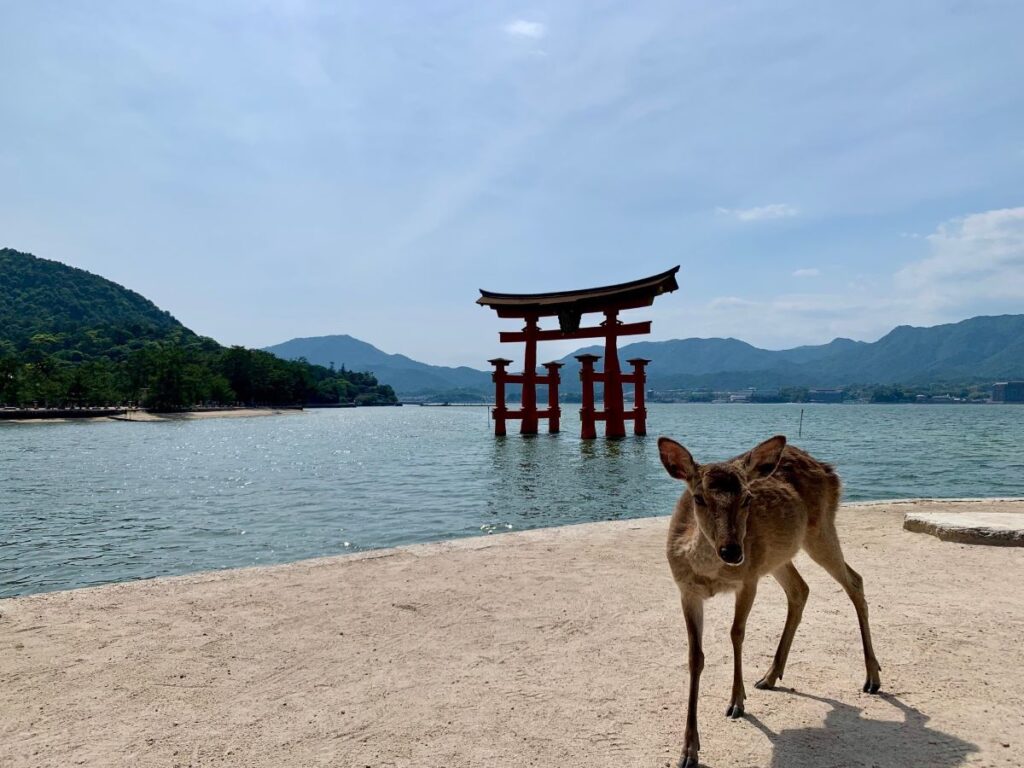
Summer (June–August)
What to expect:
Hot, humid, and festive. June is the rainy season, but it’s short and has perks, notably, fewer tourists and lower prices.
Highlights:
- Colourful festivals like Gion Matsuri and Tanabata
- Fireworks everywhere in July and August
- June can be the cheapest time to visit Japan
- Hokkaido is ideal for escaping the heat
Downsides:
- Uncomfortably humid in many areas, I cannot understate this, even for those experienced with humidity!
- Obon (mid-August) causes major travel congestion
- Typhoon risk builds late August
Where to go:
Hokkaido, Tohoku, the Japan Alps, coastal towns

Autumn (September–November)
What to expect:
Autumn is arguably Japan’s most comfortable season. The colours in October and November rival spring’s blossoms, and prices are often more reasonable. In my opinion this is the best time to travel to Japan for the most stunning landscape shots.
Highlights:
- Crisp, dry weather
- Autumn foliage (especially in November)
- Fewer crowds than spring
Downsides:
- September can bring typhoons
- Shorter daylight in late autumn
Where to go:
Tokyo, Osaka, Kyoto, Nikko, Kamikochi, Nara, Iya Valley
TOP TIP! Have the smoothest arrival in Japan by booking your airport transfer in advance and ensuring you have your phone setup for data when you land – get 15% off!
Winter (December–February)
What to expect:
Cold, clear, and surprisingly quiet. The best time of year to visit Japan if you dont do well in the heat. Also ideal if you want to avoid crowds or experience Japan’s snow country and hot springs.
The big watch out is between Christmas and New Year, you will have to do your research to ensure things you want to see and places you want to go are not closed.
If you are a skiier, i need not say much more. For many, especially Europeans like me, Skiing in Japan is a bucket list adventure, Winter is your time!
Highlights:
- Great Fuji views on clear days
- Skiing and snowboarding in Hokkaido and Nagano
- Try a beautiful onsen (hot springs) in places like Hakone and Kusatsu
Downsides:
- Can be very cold inland
- Rural areas may close or slow down
- New Year closures (29 Dec–3 Jan)
Where to go:
Niseko, Hakuba, Sapporo, Kusatsu Onsen, Tokyo (for crisp blue skies)
TOP TIP! Picking where to stay in Japan can be overwhelming with so much choice – My hand picked guides to the best neighbourhoods and hotels below will do the hard work for you
HOTELS FOR FAMILIES AND BIG GROUPS IN TOKYO : More space, rooms that sleep multiple people and locations that make life easier
THE BEST TOKYO HOTELS : Perfect for couples, first time travellers and those looking to minimise their time on public transport
THE PERFECT AREAS TO STAY IN OSAKA : The best hotels by neighbourhood and budget
MY FAVOURITE HOTELS IN KYOTO : Hotels in Kyoto vary a lot, I’ve broken down the best in each area
Worst time to visit Japan (Unless you have no other option)
These periods are crowded, expensive, and require extra planning. They are not impossible, so I strongly advise against ruling Japan out if these are your only available times to visit
In fact, my frst ever trip to Japn coincided with Golden Week (we had not other option). We were in Tokyo for this period and didn’t find it as bad as many people had been saying.
If you are flexible with your days, book in advance for accommodation and activities and a prepared for crowds (we’re from London) it is manageable.
- Golden Week (29 Apr–5 May)
Domestic travel surge. Trains and hotels book out. - Obon (Mid-August)
Another peak travel week. Long queues and packed stations. - New Year (29 Dec–3 Jan)
Many businesses close. Transport is full. Not ideal unless visiting family, snow destinations or staying in one place.
What if I can only travel during these busy times?
If your only option is to visit during one of Japan’s three peak travel headaches – Golden Week, Obon, or New Year – there are a few key things to consider, I will have you managing it like a pro in no time.
Don’t fret, a trip to Japan during these windows is significantly better than no trip to Japan – I can vouch for that! There are also positives, with festivals, special events and even free entry to some things.
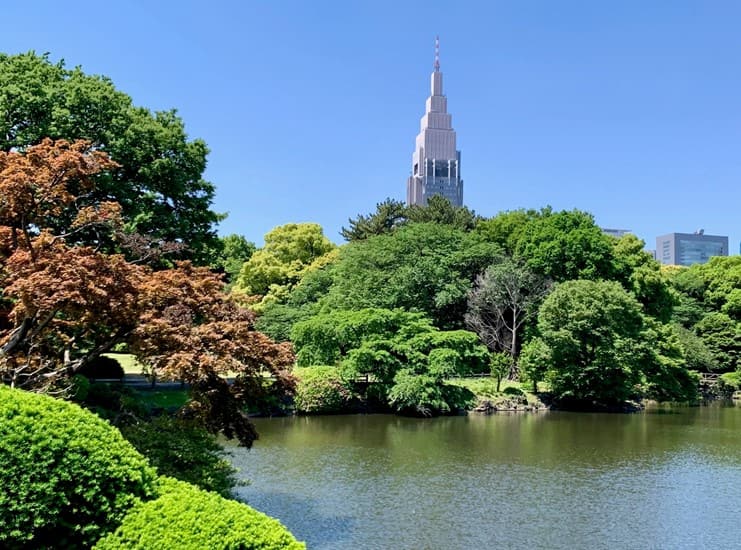
Golden Week
What to expect:
- Japan’s biggest national holiday stretch
- Domestic travel surges – bullet trains, planes, and hotels can book out months in advance
- Theme parks, sightseeing spots, and city attractions are packed
- Prices jump, especially for hotels
How to make it easier:
- Stay put in one region to avoid the worst of the busy trains
- Book accommodation and rail passes at least 3 months early – or be willing to compromise
- Visit less-touristy spots (e.g. Kanazawa, Tohoku) instead of Tokyo/Kyoto
- Get up early – sights are quietest before 9 AM
Top Tip!
Use this time to enjoy local neighbourhoods, food experiences, and day trips rather than major sightseeing loops across the country.
Obon Week
What to expect:
- Cultural holiday to honour ancestors – many Japanese people return to their hometowns
- Roads, trains, and airports are much busier than normal
- Cities like Tokyo feel emptier; countryside towns get busy
- Humid, very hot weather
How to make it easier:
- Book all domestic transport in advance, especially if using Shinkansen and JR Pass
- Base yourself in a major city and day-trip from there
- Take advantage of city hotel discounts – many locals have left
- Pack light, breathable clothes and hydrate constantly
Top Tip!
Attend a bon odori festival – a unique highlighe of this week. Tokyo, Kyoto, and rural towns all host beautiful dance and lantern events.
New Year (Shōgatsu)
What to expect:
- Many businesses, restaurants, and attractions close between 31 Dec – 2 Jan
- Train stations and airports are extremely busy pre and post New Year
- Families gather at home; cities may feel quiet or subdued
- Japan’s most important cultural holiday
How to make it easier:
- Arrive before 29 Dec and don’t plan to move around until after 3 Jan
- Stay in larger cities – Tokyo and Osaka still have open restaurants and New Year lights
- Enjoy local culture: visit a shrine for hatsumode, the first prayer of the year
- Book a ryokan with meals included during the closure window, not only a nice experience but also makes your life easier
Top Tip!
For a unique cultural experience, spend New Year at a hot spring town like Hakone, Kinosaki, or Kusatsu. Book a Ryokan stay and book early, as they fill up fast. Hakone was one of the absolute highlights of our first trip to Japan.
What is the weather like in Japan by month
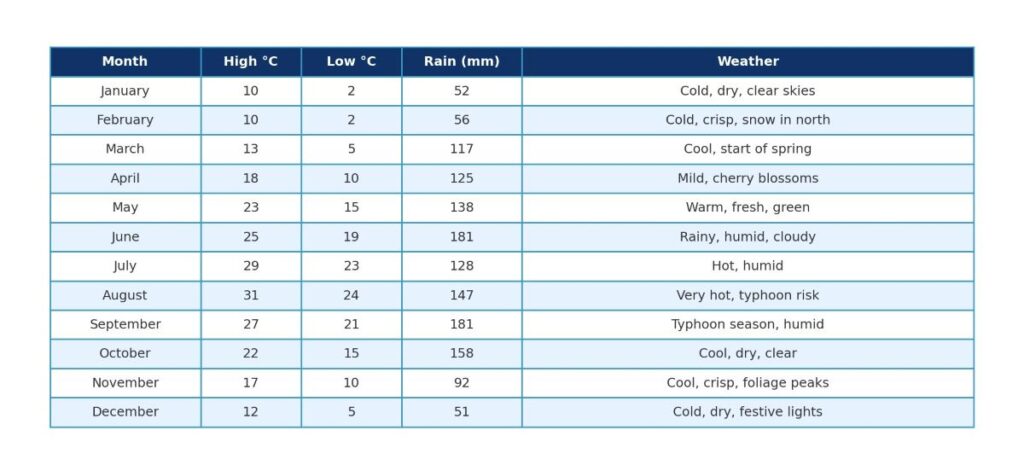
Month-by-month guide to the best time to visit Japan
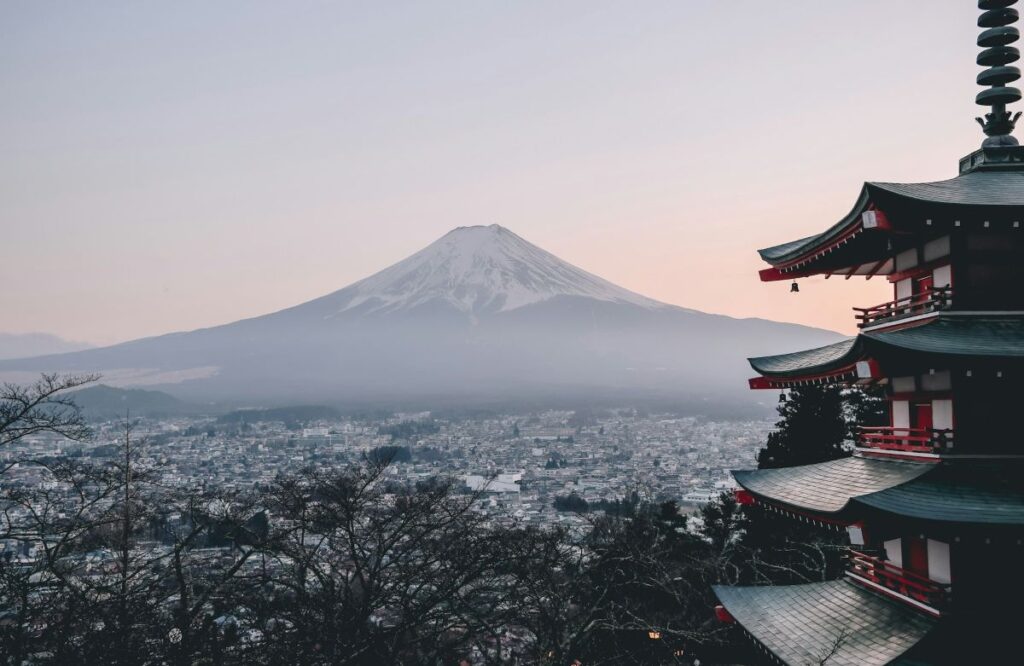
January – Quiet, Cold, and Snowy
- Weather: Cold across most regions. Snow common in the north and mountains. Dry and clear in Tokyo.
- Crowds: Low (after New Year holiday ends ~3 Jan)
- Best for: Skiing in Hokkaido/Nagano, peaceful temples, winter views of Mount Fuji
- Events:
- New Year shrine visits (hatsumode)
- Sumo Tournament in Tokyo (mid-Jan)
- Tips:
- Great value on hotels and flights after 5 Jan
- Wear thermals and waterproof footwear in snowy areas
February – Snow Season + First Blossoms
- Weather: Still winter. Snow sports peak. Slightly less cold than January.
- Crowds: Very low except ski resorts
- Best for: Sapporo Snow Festival, onsens, early plum blossoms in Tokyo/Kyushu
- Events:
- Sapporo Snow Festival (early Feb)
- Otaru Snow Light Path Festival
- Tips:
- Book ski resorts early they sell out quickly
- Pair a city trip with a countryside onsen stay
March – Changing Seasons Begin
- Weather: Warming in southern Japan, still chilly in the north
- Crowds: Rising mid-late month as blossom season starts
- Best for: Early cherry blossoms in Fukuoka, Hiroshima, Tokyo
- Events:
- Plum blossoms (late Feb–mid March)
- Tokyo blossoms (from ~25 March)
- Tips:
- Flexible dates help catch peak bloom
- Weather can swing—bring layers
April – Peak Cherry Blossom season
- Weather: Mild and sunny in most areas
- Crowds: Extremely high in sakura hotspots
- Best for: Hanami picnics, traditional spring festivals, photogenic cities
- Events:
- Full bloom in Tokyo/Kyoto (late March–early April)
- Takayama Spring Festival (14–15 Apr)
- Tips:
- Book hotels and trains 6+ months ahead or prepare to be flexible with where you are willing to stay
- Visit early morning or evening for quieter hanami spots
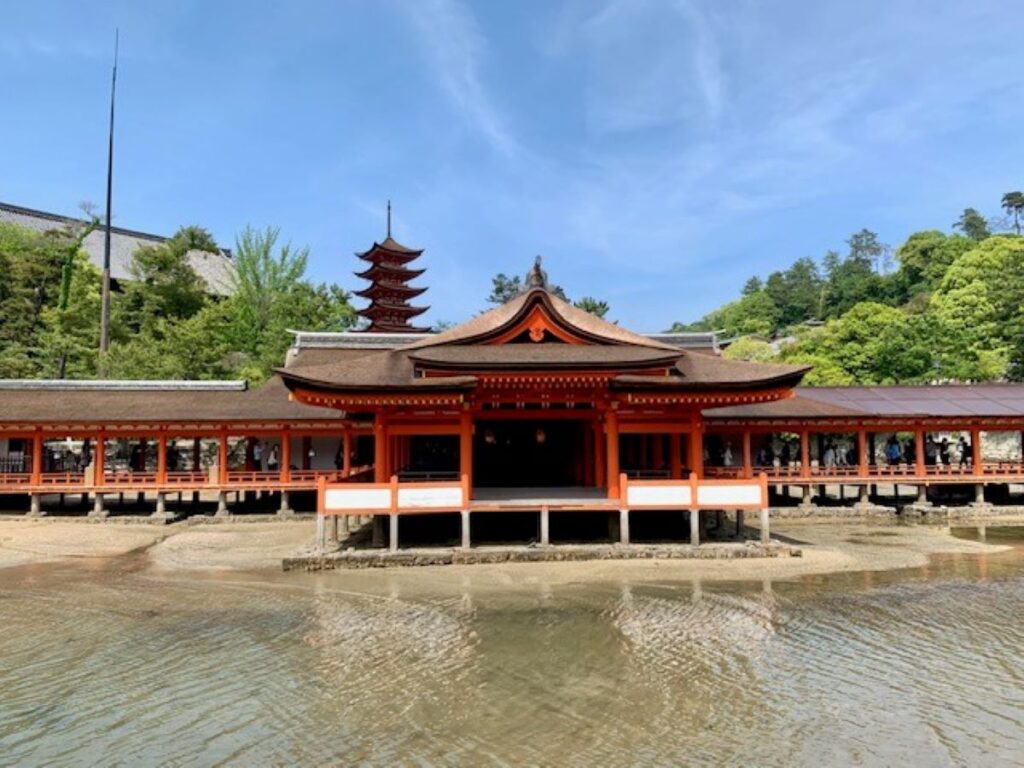
May – Golden Week and Peaceful Spring
- Weather: Warm and stable. Ideal for outdoor sightseeing.
- Crowds: Busier during Golden Week, calm afterwards
- Best for: Countryside exploration, clear skies, hiking
- Events:
- Children’s Day (5 May) – free entry to some of the cities sights and parks
- Aoi Matsuri in Kyoto (15 May)
- Tips:
- Avoid travel during Golden Week
- Post-GW is one of the best times to explore Japan calmly
June – Rainy Season with Lower Prices
- Weather: Warm, humid, and rainy (except in Hokkaido)
- Crowds: Low
- Best for: Hydrangea gardens, budget travel, quiet museums
- Events:
- Hydrangea blooms at temples (e.g. Meigetsuin in Kamakura)
- Tips:
- Travel with an umbrella and waterproof shoes
- Avoid mountainous hikes due to slipperiness
July – Heat, Humidity, and Festivals
- Weather: Hot and humid. Rain eases up by mid-month.
- Crowds: Medium—more domestic travel begins
- Best for: Festivals, fireworks, Hokkaido hiking
- Events:
- Gion Matsuri (Kyoto, all month)
- Tanabata Festival (early July in Sendai, later elsewhere)
- Tips:
- Air-conditioned escapes (museums, malls, arcades) are essential
- Pack light, breathable clothing

August – Fireworks, Obon, and Summer
- Weather: Hottest month of the year. Typhoon risk increases later in the month.
- Crowds: High around Obon, especially on transport
- Best for: Night festivals, coastal escapes, summer dishes
- Events:
- Obon holiday (mid-Aug)
- Firework festivals (Tokyo, Nagaoka, etc.)
- Tips:
- Book trains well in advance for Obon
- Stay hydrated – heatstroke is a real risk
September – Typhoons Then Tranquillity
- Weather: Hot and humid early on; cooler later. Highest typhoon risk.
- Crowds: Low outside long weekends
- Best for: Hokkaido foliage, post-summer discounts
- Events:
- Silver Week (some years in mid-Sept)
- Tips:
- Check weather forecasts daily
- Travel insurance during typhoon season is a must
October – One of the Best Months Overall
- Weather: Warm, low humidity, clear skies
- Crowds: Moderate
- Best for: Foliage in northern regions, city strolls, photography
- Events:
- Takayama Autumn Festival (9–10 Oct)
- Kurama Fire Festival (Kyoto)
- Tips:
- Book popular routes early – especially Kyoto
- Great time for multi-city trips and day hikes
November – Peak Autumn Colours
- Weather: Cool, dry, and scenic
- Crowds: High in foliage spots (Kyoto, Nikko)
- Best for: Autumn leaves, gardens, temple visits
- Events:
- Momiji season (late Nov in Kyoto)
- Shichi-Go-San (child blessing festival, mid-Nov)
- Tips:
- Visit temples early or late in the day to avoid tour groups
- Bring warm layers for chilly evenings
December – Lights, Ski Season, and New Year Rush
- Weather: Cold, clear skies in cities. Snow begins in mountains.
- Crowds: Low early month, extremely high 29 Dec–3 Jan
- Best for: Illuminations, ski resorts, onsens
- Events:
- Christmas lights across Tokyo, Osaka, Kobe
- Ski season starts mid-late December
- Tips:
- Avoid domestic travel from 29 Dec
- Consider spending New Year in a ryokan for traditional experience
FAQ about the best time to visit Japan
What is the best month to visit Japan?
April and November are widely considered the best months to visit Japan. However my personal preference is for May and October, as the weather is a little more consistent, crowds are slightly better and costs are a little lower
What is the best month to go to Disney or Universal in Japan?
Mid-May, late September, and early December are ideal times to visit Tokyo Disney Resort or Universal Studios Japan.
- These windows avoid school holidays and national holidays, meaning fewer crowds and shorter queue times.
- Weekdays (Tue–Thu) are always better than weekends.
What is the cheapest month to visit Japan?
June is typically the cheapest month to visit. It’s rainy season, so fewer tourists come, which means lower hotel and flight prices. January (after New Year) and early December are also budget-friendly.
What month has the least crowds in Japan?
January and February are the quietest months overall.
- Fewer tourists visit during winter, especially outside ski areas.
- Early June can also be quiet before school holidays begin.
When is typhoon season in Japan?
Japan’s typhoon season runs from late August to early October, peaking in September. Most impact southern and coastal regions.
Does it snow in Tokyo?
It occasionally snows in Tokyo in January or February, but it rarely settles. For real snow, head to Nagano or Hokkaido.
When should I book for cherry blossom season in Japan?
Book your flights and hotels at least 4–6 months in advance, especially for Kyoto or Tokyo between 20 March and 10 April.


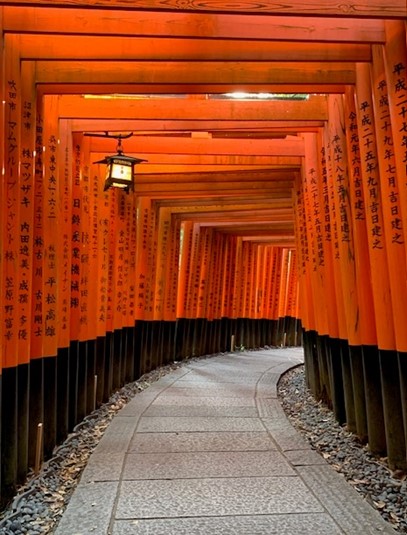
Pingback: The best apps for travelling in Japan - Travel tips and guides - Global Trip Diaries
Pingback: Basic Japanese phrases for your first trip to Japan - Travel tips and guides - Global Trip Diaries
Pingback: Kyoto in 2 Days: A First-Timer’s Itinerary with Map & Costs
Pingback: Japan two week Itinerary: My exact Golden Route - Travel tips and guides - Global Trip Diaries
Pingback: The perfect 3 days in Tokyo, Japan: Full itinerary - Travel tips and guides - Global Trip Diaries
Pingback: Dos and don'ts in Japan: A first-timers etiquette guide
Pingback: How many days in Osaka for the ultimate Itinerary
Pingback: The perfect Hakone loop itinerary for the best time